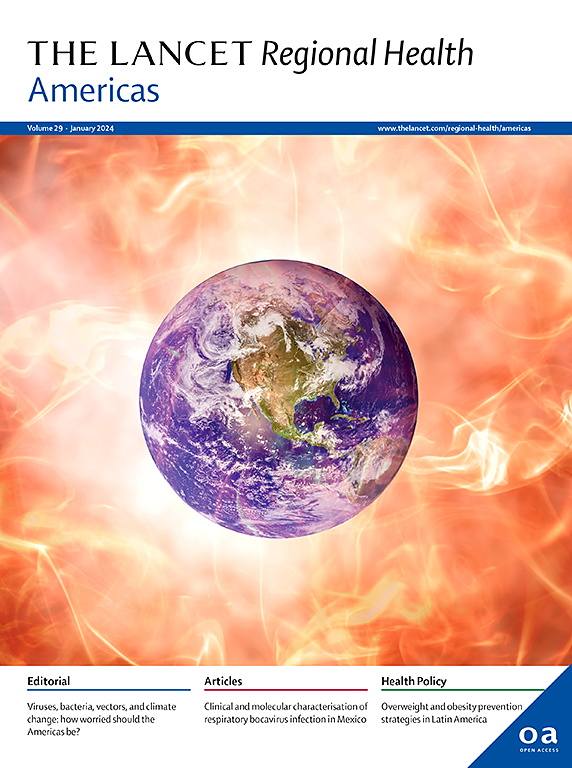Future health expenditures and its determinants in Latin America and the Caribbean: a multi-country projection study
IF 7
Q1 HEALTH CARE SCIENCES & SERVICES
引用次数: 0
Abstract
Background
Countries in Latin America and the Caribbean (LAC) have experienced important demographic, epidemiological, economic, and policy developments that raise concerns about their ability to afford health expenditures in the future. This paper forecasts how current health expenditures (CHE) in LAC countries will change over the next 30 years and identifies key drivers of health expenditure growth.
Methods
A statistical model to forecast CHE based on changing disease burden, economic growth, technology, and demography was developed. CHE by age and disease group at baseline (2018/19) were estimated for countries in the LAC region based on seven index countries. Baseline expenditures were projected to 2050.
Findings
Per capita CHE will increase across the LAC region (median increase 2.75 times) between baseline and 2050. All Latin American countries are expected to double per capita CHE in this period. Expected increases in Caribbean countries are more variable. Large increases in CHE growth related to neoplasms, circulatory system and genitourinary conditions are observed. Growth in CHE will be highest in older age groups.
Interpretation
Increases in health expenditures will be driven largely by economic growth and technology, while demography and epidemiology had smaller effects. The control of health expenditures and more efficient use of health resources must become a priority for the LAC region.
Funding
This study was funded by the Inter-American Development Bank.
拉丁美洲和加勒比地区未来的卫生支出及其决定因素:多国预测研究
拉丁美洲和加勒比国家经历了重要的人口、流行病学、经济和政策发展,引起人们对其未来负担卫生支出能力的担忧。本文预测了未来30年拉丁美洲和加勒比地区国家目前的卫生支出将如何变化,并确定了卫生支出增长的主要驱动因素。方法建立基于疾病负担、经济增长、技术、人口等因素的统计模型。根据七个指数国家,按年龄和疾病组在基线(2018/19)对拉丁美洲和加勒比地区各国的CHE进行了估计。基线支出预计到2050年。从基线到2050年,整个LAC地区的人均CHE将增加(中位数增加2.75倍)。预计在此期间,所有拉丁美洲国家的人均CHE将翻一番。加勒比国家的预期增长变化较大。观察到与肿瘤、循环系统和泌尿生殖系统疾病相关的CHE生长的大量增加。在年龄较大的群体中,儿童教育增长最快。卫生支出的增加将主要受到经济增长和技术的推动,而人口统计学和流行病学的影响较小。控制卫生支出和更有效地利用卫生资源必须成为拉丁美洲和加勒比区域的优先事项。这项研究由美洲开发银行资助。
本文章由计算机程序翻译,如有差异,请以英文原文为准。
求助全文
约1分钟内获得全文
求助全文
来源期刊

Lancet Regional Health-Americas
Multiple-
CiteScore
8.00
自引率
0.00%
发文量
0
期刊介绍:
The Lancet Regional Health – Americas, an open-access journal, contributes to The Lancet's global initiative by focusing on health-care quality and access in the Americas. It aims to advance clinical practice and health policy in the region, promoting better health outcomes. The journal publishes high-quality original research advocating change or shedding light on clinical practice and health policy. It welcomes submissions on various regional health topics, including infectious diseases, non-communicable diseases, child and adolescent health, maternal and reproductive health, emergency care, health policy, and health equity.
 求助内容:
求助内容: 应助结果提醒方式:
应助结果提醒方式:


